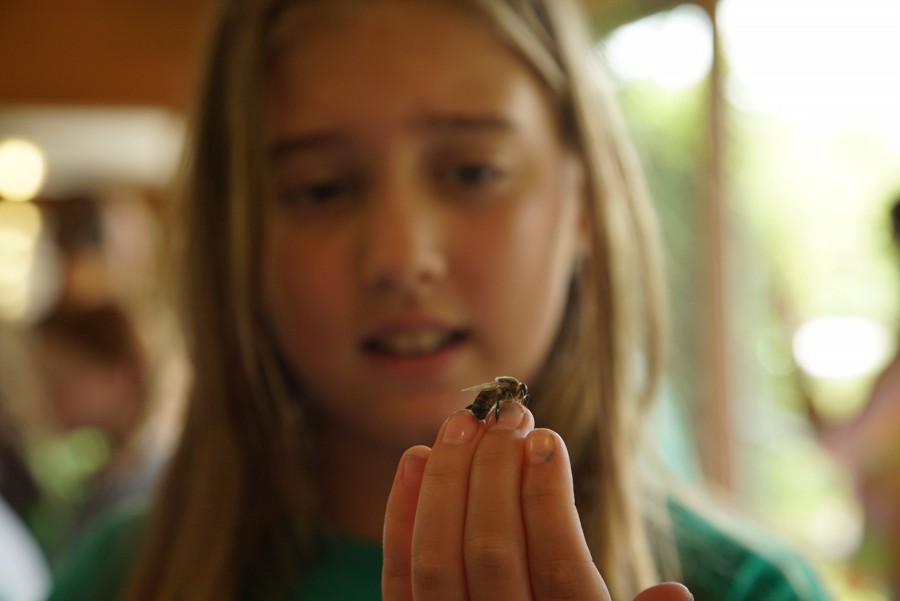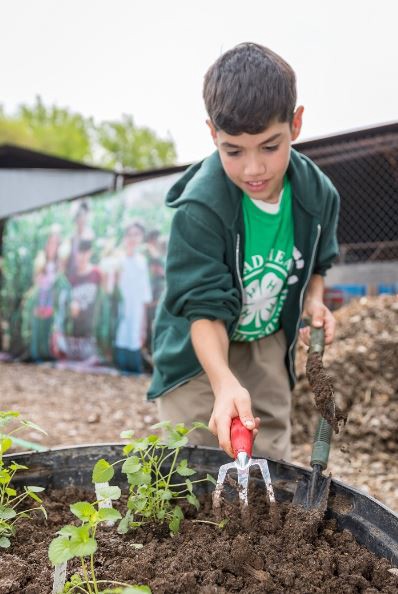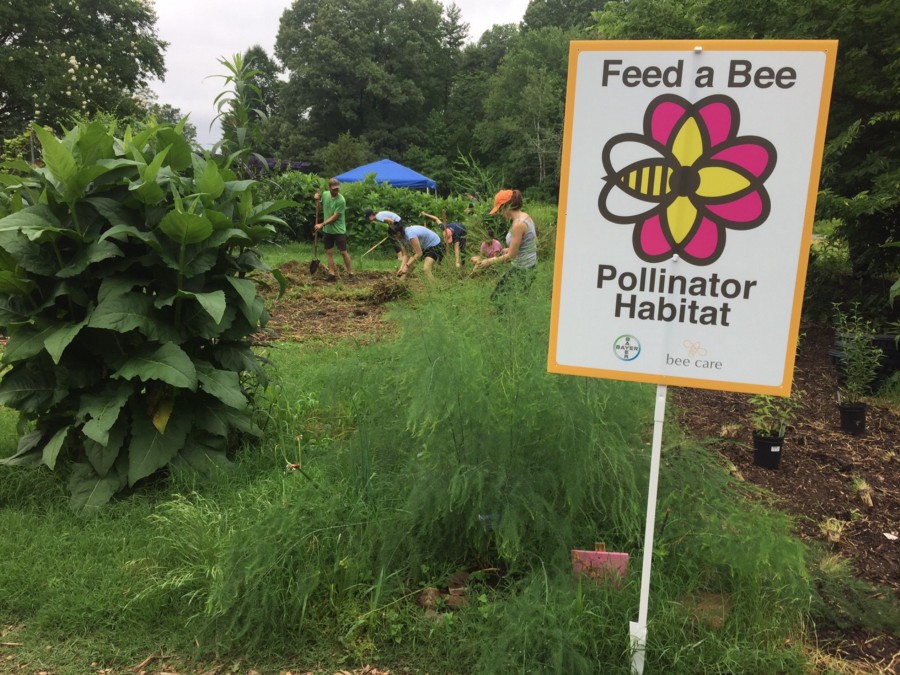Can This One Action Help Save The Honey Bee?
This post was originally published on GMO Answers' Medium page.
Post writtent by Becky Langer. Becky Langer is project manager of North American Bee Health for Bayer CropScience LP. As project manager for North American Bee Health, Becky ensures the success of the North American Bee Project Team and directs and manages Bee Care strategy and activities.
In light of National Honey Bee Day this Saturday, August 19, we wanted to get the buzz on the vital role pollinators play to help our ecosystem and food system thrive. Becky Langer of North American Bee Health for Bayer CropScience LP explains these benefits and how you can help sustain and protect these important insects – it might be easier than you think!

We’ve all heard about the so-called “beepocalypse” that will cause the collapse of our food system and the end of mankind as we know it. After all, even Albert Einstein himself said that we’d only have four years left to survive if the honey bee died, right?
Well… not so much. In all honesty, there’s no proof Albert Einstein ever said that, and 90 percent of the crops the world relies on for food are wind-pollinated, self-pollinated or don’t actually rely on pollination at all.
Still, pollinators are a vital part of our ecosystem and play an important role in the variety of healthy, nutritious foods available to us. Crops like strawberries see a significant increase in yield when pollinated by honey bees, and almonds rely entirely on pollination by honey bees.
So how are the bees faring today? First, the good news:
The most recent colony report released by the U.S. Department of Agriculture shows the number of honey bee colonies rose to 2.89 million in April 2017, continuing a trend we’ve seen over the past twenty years. Similarly, colony losses overwinter, considered a key indicator of bee health have trended downward in the decade that the USDA has been conducting surveys.
These improved numbers are largely a testament to the great work beekeepers are doing in managing their hives, but also highlight the commitment that many groups have made to pollinator health.
However, there is still more we need to do when it comes to bee health. The deadly Varroa mite is the single most important stressor impacting honey bees. Like a tick, the Varroa mite latches onto bees’ backs and literally sucks their blood. As if that’s not concerning enough, they transmit dangerous diseases and lay their eggs in honeycombs with new bees. Infestations of mites have been one of the most pervasive issues leading to honey bee declines.
Another factor affecting bees today is a lack of abundant, diverse sources of nutrition. We can’t survive only on a diet of pizza and junk food and be healthy (as much as we might like to), and bees can’t forage on a single source of plant nectar and remain at optimum health. They need access to a variety of flowering plants and food sources close to home. Bees that are well-nourished are better able to withstand the other health stressors they face, including the Varroa mite and other pests, diseases, stress from transportation and exposure to improperly-used pesticides.
As project manager for North American Bee Health, Becky ensures the success of the North American Bee Project Team and directs and manages Bee Care strategy and activities. (Image Credit: Bayer CropScience LP)
Addressing Varroa mite and lack of proper nutrition remain the top two priorities for beekeepers and organizations looking into ways to improve honey bee health.
But what can the average consumer do to help these fuzzy little insects that do so much for us? The answer is simple: plant flowers.
That’s it. Go out into your backyard, community garden or the flower pot on your apartment deck, plant seeds into the soil, add water and sunlight and – voila! You’ve made a real, constructive stride toward helping pollinators in your community.

It really is that simple. Planting more pollinator-attractant flowers and other plants means more forage, better nutrition and, ultimately, healthier bees.
The Feed a Bee initiative, launched by the Bayer Bee Care Program in 2015, is just one of the countless organizations and programs striving today to do this on a larger scale. Since then, we’ve distributed three billion wildflowers for planting and worked with organizations and individuals to increase forage for pollinators, which helps provide them with the food they need to survive and thrive.

Organizations like the Washington Youth Garden in D.C., which partnered with Feed a Bee earlier this year to re-establish its pollinator garden.
Like Cantigny Golf in Illinois, which planted Feed a Bee wildflowers to prove golf courses can also serve as conservation areas.
Like Salem4Youth, a small nonprofit school for at-risk youth that planted five acres of pollinator forage last fall to support the apiaries that make up the school’s therapeutic beekeeping curriculum.
And individuals like the nearly 500,000 people who planted Feed a Bee wildflowers of their own, and the countless more who pledged their support to help pollinators.
You can also be part of the solution.
As you celebrate National Honey Bee Day this year, consider planting a flower on “bee-half” of our pollinator friends and sharing how you made a difference online using #FeedABee. For more information on how you can get involved with Feed a Bee, including applying for funding your own forage initiative, visit FeedABee.com.